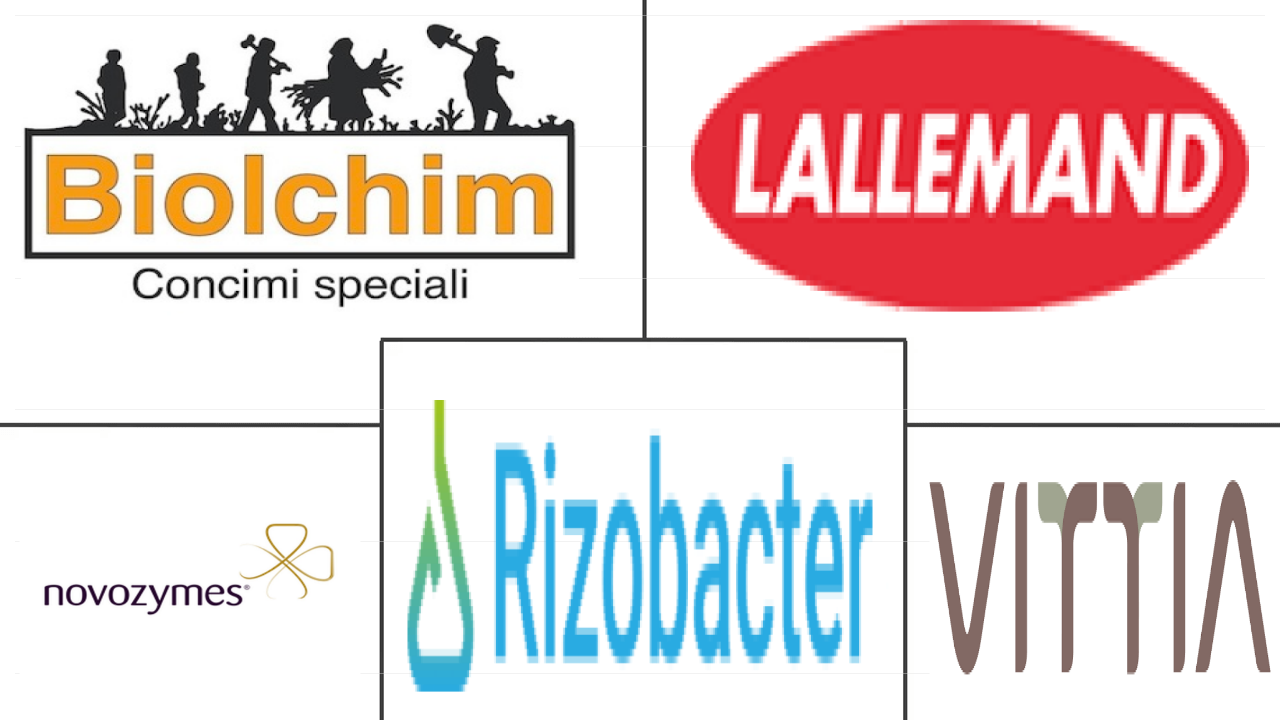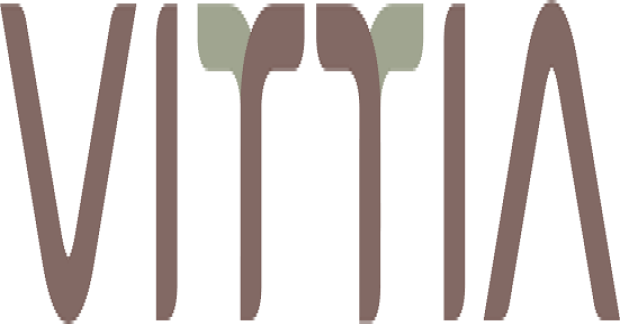Market Size of brazil biofertilizer Industry
| Icons | Lable | Value |
|---|---|---|
|
|
Study Period | 2017 - 2029 |
|
|
Market Size (2024) | USD 129.92 Million |
|
|
Market Size (2029) | USD 206.43 Million |
|
|
Largest Share by Form | Azotobacter |
|
|
CAGR (2024 - 2029) | 9.70 % |
|
|
Fastest Growing by Form | Rhizobium |
|
|
Market Concentration | Low |
Major Players |
||

|
||
|
*Disclaimer: Major Players sorted in no particular order |
Brazil Biofertilizer Market Analysis
The Brazil Biofertilizer Market size is estimated at 129.92 million USD in 2024, and is expected to reach 206.43 million USD by 2029, growing at a CAGR of 9.70% during the forecast period (2024-2029).
129.92 Million
Market Size in 2024 (USD)
206.43 Million
Market Size in 2029 (USD)
5.30 %
CAGR (2017-2023)
9.70 %
CAGR (2024-2029)
Largest by Form
39.34 %
value share, Azotobacter, 2023
Azotobacters are nitrogen-fixing bacteria, found in alkaline and neutral soils and application of azotobacteras bio-inoculants may increase crop productivity by 10-12%.
Fastest by Form
11.02 %
Projected CAGR, Rhizobium, 2024-2029
Rhizobium biofertilizers are gram-negative, motile, non-sporulating rod bacteria that capable to fix 50-200 kg N/ha and fix 80 to 90% of the crop's nitrogen needs.
Largest by Crop Type
79.19 %
value share, Row Crops, 2023
Soyabean, wheat and corn are the major row crops grown in Brazil. Among the biofertilizers, Azotobacter dominated the row crops segment with a market share of 39.3% in 2022
Fastest by Crop Type
9.74 %
Projected CAGR, Row Crops, 2024-2029
Row crops are dominating the Brazil biofertilizers market with a market share of 79.2%, this is due the increasing organic acreage, from 2017 to 2022, 23.3% increased.
Leading Market Player
11.41 %
market share, Vittia Group, 2022

Vittia Group has four distribution centers and a distribution network across the country. They have a team of agronomists who assist the farmers in taking right decisions
- Biofertilizers are living microorganisms that improve plant nutrition by mobilizing or increasing nutrient availability in soils. Bio-fertilizers, which are essential components of organic farming, play an important role in long-term soil fertility and sustainability by fixing atmospheric dinitrogen (N=N), mobilizing fixed macro and micronutrients, or converting insoluble P in the soil into forms available to plants, increasing their efficiency and availability.
- Many studies have concluded that inoculation with biofertilizers increases yields by reducing production costs. Brazil consumes 8% of the world's fertilizers and is the fourth-largest importer. Russia accounts for roughly one-fifth of Brazilian fertilizer imports. The Russian invasion of Ukraine significantly increased the risk of disruption of the global fertilizer trade. Due to this, fertilizer prices have increased significantly.
- As fertilizer prices increase, farmers switch to biofertilizers. Moreover, 80.0% of the soybean acreage in the country is being applied with biofertilizers as part of their cultivation. Many studies have shown that inoculation with biofertilizers increases yield by reducing production costs.
- As a result of its effectiveness in nitrogen fixation, Azotobacter biofertilizer is the most popular in the country. It is followed by mycorrhizal fungi, which enhance nutrient and water uptake by the host plant by exploiting a larger volume of soil than roots alone can.
- Organic cultivation areas increased by 1.2% from 2017 to 2022. As organic farming in the country increases, fertilizer prices rise, and R&D investments in biofertilizers increase, the Brazilian biofertilizer market will grow rapidly.
Brazil Biofertilizer Industry Segmentation
Azospirillum, Azotobacter, Mycorrhiza, Phosphate Solubilizing Bacteria, Rhizobium are covered as segments by Form. Cash Crops, Horticultural Crops, Row Crops are covered as segments by Crop Type.
- Biofertilizers are living microorganisms that improve plant nutrition by mobilizing or increasing nutrient availability in soils. Bio-fertilizers, which are essential components of organic farming, play an important role in long-term soil fertility and sustainability by fixing atmospheric dinitrogen (N=N), mobilizing fixed macro and micronutrients, or converting insoluble P in the soil into forms available to plants, increasing their efficiency and availability.
- Many studies have concluded that inoculation with biofertilizers increases yields by reducing production costs. Brazil consumes 8% of the world's fertilizers and is the fourth-largest importer. Russia accounts for roughly one-fifth of Brazilian fertilizer imports. The Russian invasion of Ukraine significantly increased the risk of disruption of the global fertilizer trade. Due to this, fertilizer prices have increased significantly.
- As fertilizer prices increase, farmers switch to biofertilizers. Moreover, 80.0% of the soybean acreage in the country is being applied with biofertilizers as part of their cultivation. Many studies have shown that inoculation with biofertilizers increases yield by reducing production costs.
- As a result of its effectiveness in nitrogen fixation, Azotobacter biofertilizer is the most popular in the country. It is followed by mycorrhizal fungi, which enhance nutrient and water uptake by the host plant by exploiting a larger volume of soil than roots alone can.
- Organic cultivation areas increased by 1.2% from 2017 to 2022. As organic farming in the country increases, fertilizer prices rise, and R&D investments in biofertilizers increase, the Brazilian biofertilizer market will grow rapidly.
| Form | |
| Azospirillum | |
| Azotobacter | |
| Mycorrhiza | |
| Phosphate Solubilizing Bacteria | |
| Rhizobium | |
| Other Biofertilizers |
| Crop Type | |
| Cash Crops | |
| Horticultural Crops | |
| Row Crops |
Brazil Biofertilizer Market Size Summary
The Brazil biofertilizer market is poised for significant growth, driven by the increasing adoption of organic farming practices and the rising costs of chemical fertilizers. Biofertilizers, which enhance soil fertility and plant nutrition through natural microorganisms, are becoming essential in Brazil's agricultural sector. The country's substantial consumption of global fertilizers and its position as a major importer highlight the critical need for sustainable alternatives. The geopolitical tensions, such as the Russian invasion of Ukraine, have further exacerbated the volatility in fertilizer prices, prompting farmers to shift towards biofertilizers. This transition is particularly evident in the soybean sector, where a significant portion of the acreage is already utilizing these organic solutions. The popularity of specific biofertilizers, like Azotobacter and mycorrhizal fungi, underscores their effectiveness in improving crop yields and reducing production costs.
The market landscape is characterized by a fragmented structure, with key players like Biolchim SpA, Lallemand Inc., Novozymes, Rizobacter, and Vittia Group leading the charge. Recent investments and strategic partnerships, such as Koppert's expansion in Brazil and Novozymes' collaboration with AgroFresh, are set to bolster the market's growth trajectory. The increasing area under organic cultivation, coupled with supportive government policies and rising consumer awareness about organic products, is expected to further drive the demand for biofertilizers. As Brazil continues to enhance its organic farming capabilities, the biofertilizer market is anticipated to expand rapidly, aligning with global trends towards sustainable agriculture and food production.
Brazil Biofertilizer Market Size - Table of Contents
-
1. MARKET SEGMENTATION (includes market size in Value in USD and Volume, Forecasts up to 2029 and analysis of growth prospects)
-
1.1 Form
-
1.1.1 Azospirillum
-
1.1.2 Azotobacter
-
1.1.3 Mycorrhiza
-
1.1.4 Phosphate Solubilizing Bacteria
-
1.1.5 Rhizobium
-
1.1.6 Other Biofertilizers
-
-
1.2 Crop Type
-
1.2.1 Cash Crops
-
1.2.2 Horticultural Crops
-
1.2.3 Row Crops
-
-
Brazil Biofertilizer Market Size FAQs
How big is the Brazil Biofertilizer Market?
The Brazil Biofertilizer Market size is expected to reach USD 129.92 million in 2024 and grow at a CAGR of 9.70% to reach USD 206.43 million by 2029.
What is the current Brazil Biofertilizer Market size?
In 2024, the Brazil Biofertilizer Market size is expected to reach USD 129.92 million.

